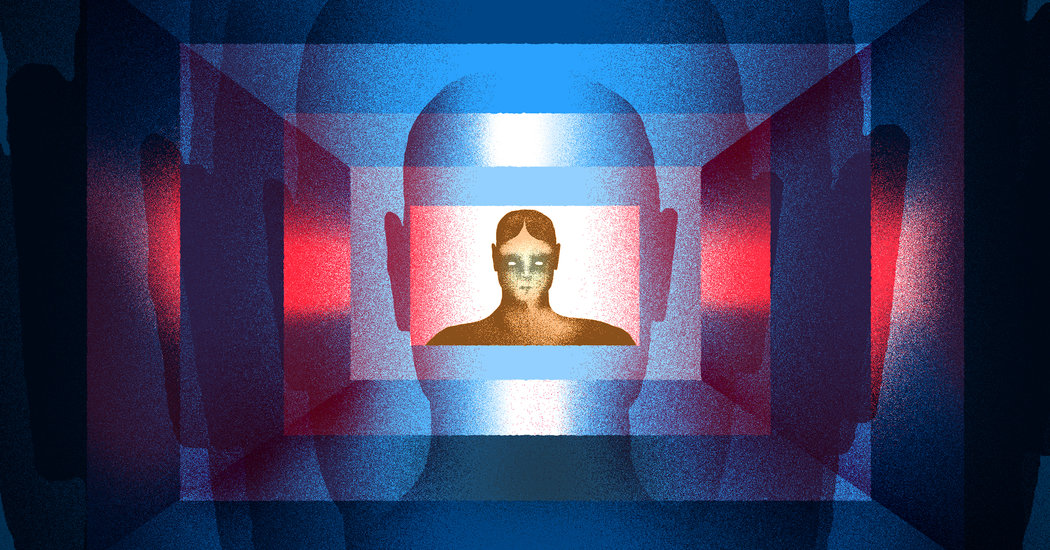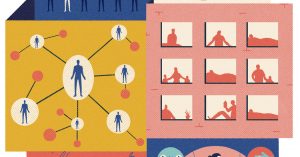The outside world is closing its doors, and the internet, as a result, is feeling the pressure. The mobile network Vodafone reported a 50 percent surge in internet use last month, and all over the world internet companies are being forced to deal with the extra demand generated by self-isolation. Much of the world is, for an undetermined period, going permanently online. Beyond the much more immediate and pressing threat of the virus, there is something disconcerting about this for anyone who studies radicalization and the internet.
“Radicalization” is an imperfect term, since to many it implies a linear escalation from simply irrational views to dangerously extremist ones. But radicalization is often built out of very real and understandable dissatisfactions. Moreover, isolation can be a strong contributing factor, as can personal uncertainty and political instability — both of which will be widespread in any society facing a rising death rate, extreme unemployment and extensive governmental failures.
And it is my fear, as a researcher of far-right and anti-feminist digital spaces, that continuing mass anxiety and material depression will combine with the contemporary digital landscape in an ugly fashion. As a dramatic post from one misogynist subculture, incels (short for involuntarily celibate), recently put it:
“Normies now feel what we feel all the time. Alone, bored, sad, aimless, horny, empty, desolate, disconnected from the rest of humanity — the endless drone of whining and moaning I’m seeing on the social media timelines is the hellscape we have to endure constantly all the time during ‘normal times’, I can’t help but have a huge dose of schadenfreude over this — welcome to our world normiescum.”
To be clear, I am not suggesting that we will all emerge from quarantine as misogynist extremists. But the reality that this post captured is that the internet is a very dark window through which to view the world. Yet more and more people will be doing so for the next few months. The psychological impact of this on a wide scale should not be dismissed, nor should its subsequent repercussions for politics.
It is undeniable that crises like a pandemic demand radical solutions. There is nothing wrong with pointing out the failures in the systems that led to so many dire consequences, or even being angry about them — as many are — and pushing for change. But my research finds that the subcultural aspects of the internet — the communities we go to for support, or to talk to people going through similar things, can make us feel less lonely in the short term but often end up entrenching us further into certain fatalistic and misanthropic ways of thinking. This, in turn, leads less to a focus on political action and more to a preoccupation with punishing transgressors — which is when it becomes dangerous.
And yet, self-isolation is the only way the effects of this pandemic will not be immediately catastrophic. So the best thing we can probably do at this time is seek to better understand how digital radicalization and the far right works, so that we can be better prepared to counter it.
Which brings me to the first important point to understand: You are not immune, regardless of who you are. This may sound facile, but it is significant. We tend to overestimate our own ability to scan through, comprehend and categorize information we read online. The human brain is remarkable for its ability to adapt to new technologies, but not all of these adaptations are beneficial, either for us as individuals or collectively.
As we retreat to online enclaves and obsessively check the news, our vision of reality is bound to become distorted. Some psychologists have theorized that when reminded of our own mortality, we retreat to familiar institutions and more vehemently reject what we perceive as different and strange. What may have once seemed like trivial annoyances — overzealous activists, grandstanding over political correctness — actually have the potential to magnify in terms of their significance to us, becoming an easy, visible target while we battle a sickness we cannot see.
This relates to the second point, which is that the internet is frequently where people go to feel differently. This is relatively unconcerning when we accept that how they feel is, for example, bored, and the content they seek out is a silly cat video. But both our emotions and the digital content we seek out are usually much more complicated than that, and this only intensifies when many people face an existential threat.
It is hard to know how this might play out in a pandemic situation. But it’s worth noting that secular societies struggle with providing mechanisms to resolve feelings of guilt. The contemporary radical right has been particularly successful in encouraging its followers to redirect any societal guilt they might feel about past historical wrongs or current states of injustice into rage at those groups who would make them feel guilty: women, people of color, Jews.
In a pandemic situation it may be possible, for instance, that we see a mass phenomenon of survivor’s guilt at the end of this. What could happen as a result is our being bombarded with tempting offers to rechannel our guilt into anger at those who were most affected, who serve as a reminder of our relative good luck: undocumented immigrants, the elderly, the poor, the disabled, even the dead. These ideas could even be promoted by those in power, who will no doubt be grateful for the transference of accountability. In some places, we can already see these forces mobilizing — see, for instance, arguments on the far right that discussions of Chinese culpability for the virus are being suppressed in the name of “political correctness,” or that there are groups “intentionally” spreading the virus, who must be punished.
Which brings me to my third point: To understand how such a spiral of anger and guilt might work, we desperately need to update our understanding of how internet subcultures function.
We think of radicalization in ways that are hopelessly old-fashioned: We frequently ignore or downplay mainstream or institutional complicity, and as a researcher of technology and politics, Becca Lewis, writes, we often think of radicalization as something the radicalized passively fell into and got swept up in.
In fact, the internet — for good and for ill — is a collaborative and imaginative space, rather than somewhere one group of people talks and another listens. We can be both influencer and influenced. As Ms. Lewis put it, “audiences often demand” increasingly radical content from their preferred creators. Then, as far-right content continues to get enormous engagement, we see the numbers, and our understanding of this content as beyond the pale naturally decreases.
Internet users are an active audience, but they are also constantly in an unprecedented state of surveillance of one another. So before we have even made the decision to watch a video or read an article, our perception of it has already been altered almost imperceptibly by the various tiny signals surrounding it. Whatever social media platform you use to engage with the world, your timeline is almost certainly the greatest source of unchecked and frequently subconscious influence.
The seemingly anarchic, democratic state of affairs on the internet can be one of its chief joys — but it is also frequently an illusion. Advertisers, after all, are keenly aware of how to utilize it to their benefit. So too, increasingly, are politicians and governments. In this age of isolation, we need to be aware of how far-right actors will attempt to exploit this unprecedented situation — and we need to be prepared for the fact that it may very well work.
Annie Kelly is a Ph.D. student at the University of East Anglia in England, researching the impact of digital cultures on anti-feminism and the far right.
The Times is committed to publishing a diversity of letters to the editor. We’d like to hear what you think about this or any of our articles. Here are some tips. And here’s our email: [email protected].
Follow The New York Times Opinion section on Facebook, Twitter (@NYTopinion) and Instagram.



















